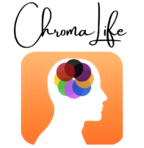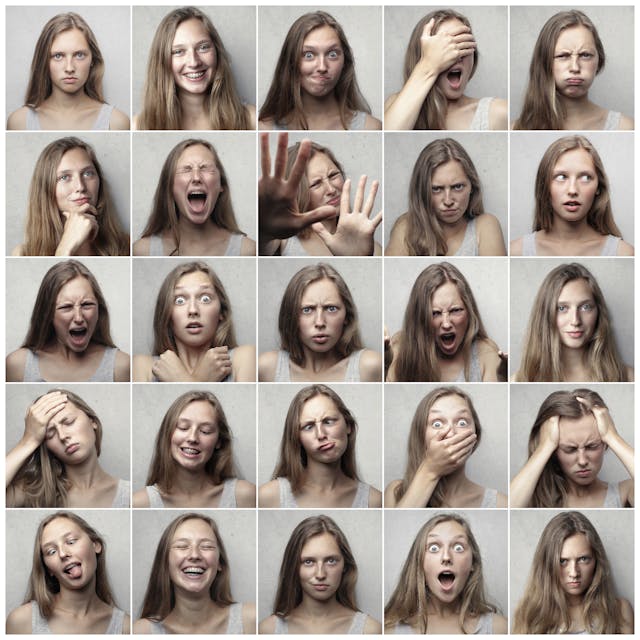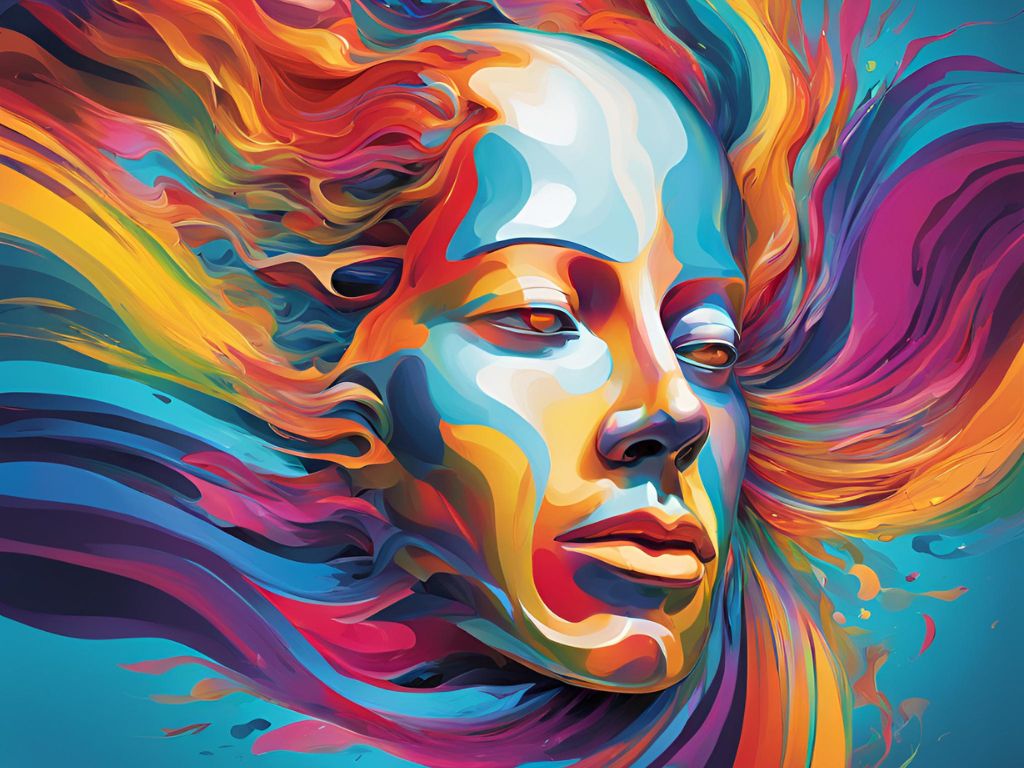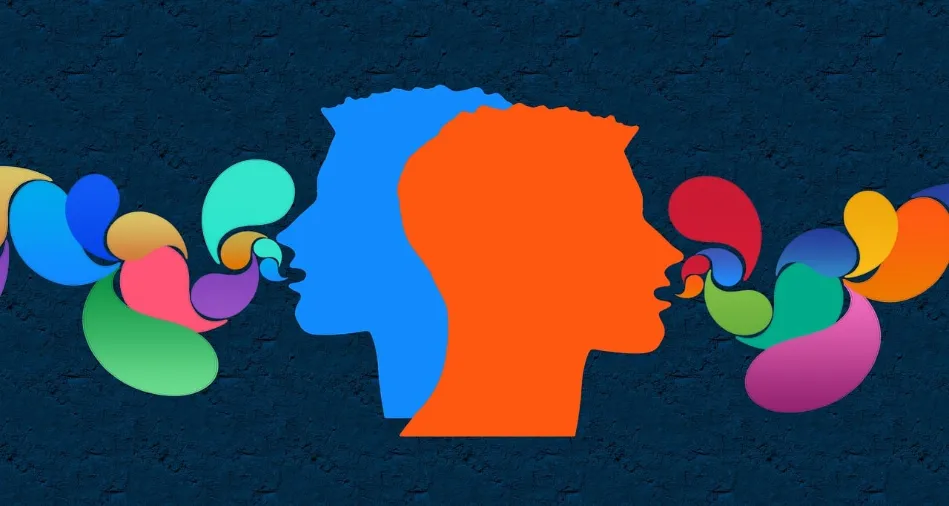[read-time]

A novel approach has emerged, linking Emotional intelligence, personality traits and color psychology. This innovative perspective offers fresh insights into understanding ourselves and others, potentially revolutionizing how we approach personal growth, professional development, and interpersonal relationships.
The intersection of emotional intelligence, personality traits, and color psychology opens up a world of possibilities for self-discovery and enhanced interpersonal dynamics. By exploring this connection, we can gain valuable insights into our own behaviors, motivations, and emotional responses, as well as those of others around us.
As we delve into this topic, we’ll uncover how color preferences and associations can reveal hidden aspects of our personalities, shed light on our emotional tendencies, and even predict certain behavioral patterns. This exploration not only promises to deepen our self-awareness but also equips us with powerful tools for personal and professional growth.
Throughout this article, we’ll examine the foundations of this color-based approach to understanding emotional intelligence and personality traits, explore its practical applications, and discuss its potential impact on various aspects of our lives. From enhancing communication skills to improving team dynamics in the workplace, the insights gleaned from this innovative perspective have far-reaching implications.
The Foundations of Color Psychology in Personality Assessment
Color psychology has long been a subject of fascination for researchers and psychologists. Its application in personality assessment represents a novel approach to understanding human behavior and emotional tendencies. This section explores the fundamental principles underlying the use of color in evaluating personality traits and emotional intelligence.
Historical Context of Color in Psychology
The use of color as a tool for psychological insight dates back centuries. Ancient cultures often attributed symbolic meanings to different hues, associating them with various emotions, qualities, and even deities. In the modern era, pioneering psychologists like Carl Jung began to explore the psychological implications of color preferences and associations.
As the field of psychology evolved, researchers started to investigate the potential connections between color preferences and personality traits more systematically. This led to the development of various color-based personality assessments, each aiming to provide unique insights into an individual’s character and emotional tendencies.
You can learn more about our personality color assessment in the article below.
The Science Behind Color Perception and Emotion
Our perception of color is not merely a visual experience but also an emotional one. Studies have shown that different colors can evoke specific emotional responses and even influence physiological reactions. For instance, warm colors like red and orange tend to elicit feelings of excitement and energy, while cool colors like blue and green are often associated with calmness and serenity.
This emotional response to color is thought to be partly innate and partly learned through cultural and personal experiences. The brain processes color information in complex ways, involving both the visual cortex and areas associated with emotion and memory. This intricate interplay between visual perception and emotional processing forms the basis for using color as a tool in personality assessment.
Key Principles of Color-Based Personality Assessments
Color-based personality assessments typically rely on several key principles:
- Color Preference: The colors an individual is drawn to can reveal aspects of their personality and emotional tendencies.
- Color Associations: How a person associates different colors with various concepts or emotions can provide insights into their thought patterns and values.
- Color Reactions: An individual’s emotional and physiological responses to specific colors can offer clues about their temperament and sensitivity.
- Color Symbolism: The meanings and symbolism a person attributes to different colors can reflect their cultural background and personal experiences.
These principles form the foundation for various color-based personality assessment tools, each offering a unique perspective on the complex interplay between color, emotion, and personality.
Understanding Emotional Intelligence Through Color
Emotional intelligence, the ability to recognize, understand, and manage our own emotions and those of others, plays a crucial role in our personal and professional lives. Color-based assessments offer a unique lens through which we can explore and enhance our emotional intelligence.
The Components of Emotional Intelligence
Emotional intelligence comprises several key components:
- Self-awareness: Recognizing and understanding our own emotions
- Self-regulation: Managing our emotions and impulses effectively
- Empathy: Recognizing and understanding the emotions of others
- Social skills: Managing relationships and interacting effectively with others
Each of these components can be explored and potentially enhanced through the lens of color psychology.
Color Preferences and Emotional Self-Awareness
Our color preferences can offer valuable insights into our emotional tendencies and self-awareness. For instance, individuals who are drawn to warm, vibrant colors like red or orange may be more in touch with their passionate, energetic side. Conversely, those who prefer cooler, calmer colors like blue or green might have a natural inclination towards introspection and emotional balance.
By examining our color preferences, we can gain a deeper understanding of our emotional landscape, potentially uncovering aspects of our personality that we may not have been fully aware of. This increased self-awareness can serve as a foundation for developing other aspects of emotional intelligence.
Color Associations and Empathy
The way we associate colors with different emotions or concepts can provide clues about our capacity for empathy. For example, someone who associates a wide range of colors with various emotional states may be more attuned to the nuances of human emotion, potentially indicating a higher level of empathy.
Color-based exercises that explore these associations can help individuals develop their empathic abilities. By consciously expanding our color-emotion associations, we can potentially enhance our ability to recognize and understand the emotions of others.
Using Color to Enhance Emotional Regulation
Color psychology can also be applied to improve emotional regulation1. Certain colors have been shown to have calming effects, while others can be energizing or mood-lifting. By understanding these effects, individuals can use color strategically to manage their emotional states.
For instance, incorporating calming blues or greens into one’s environment might help in managing stress or anxiety. Similarly, using energizing yellows or oranges might help combat feelings of lethargy or low mood. This practical application of color psychology can be a powerful tool in developing emotional self-regulation skills.
Color Assessments: A New Frontier in Personality Testing
As our understanding of the connections between color, personality, and emotional intelligence deepens, color assessments are emerging as a promising new tool in the field of personality testing. These assessments offer a unique, visually engaging approach to exploring individual differences and personal characteristics.
Types of Color-Based Personality Assessments
Several types of color-based personality assessments have been developed, each with its own approach and focus:
- Color Preference Tests: These assessments ask individuals to rank or rate their preferences for different colors. The resulting color profile is then interpreted to reveal personality traits and tendencies.
- Color Association Tests: These tests explore the emotions, concepts, or memories that individuals associate with different colors. The patterns of associations are analyzed to provide insights into personality and emotional tendencies.
- Color Creation Exercises: Some assessments involve creating color palettes or compositions. The choices made during these creative processes are interpreted to reveal aspects of personality and cognitive style.
- Color Reaction Tests: These assessments measure physiological or emotional reactions to different colors, potentially revealing subconscious personality traits or tendencies.
Advantages of Color-Based Assessments
Color-based personality assessments offer several potential advantages over traditional text-based questionnaires:
- Visual Engagement: The use of color makes these assessments visually appealing and engaging, potentially increasing participant interest and involvement.
- Cultural Adaptability: Color-based tests may be more easily adapted across cultures compared to language-based assessments, although cultural differences in color symbolism must still be considered.
- Reduced Self-Report Bias: By focusing on color preferences and associations rather than direct self-report of traits, these assessments may potentially reduce some forms of response bias.
- Intuitive Insights: Color assessments can tap into intuitive, emotional responses, potentially revealing aspects of personality that individuals may not be consciously aware of.
Personal Development and Self-Awareness
One of the most immediate applications of color-based personality insights is in the realm of personal development. By exploring their color preferences and associations, individuals can gain deeper insights into their own personality traits, emotional tendencies, and potential areas for growth.
For example, someone who discovers a strong preference for calming blues and greens might recognize their need for peace and stability in their environment. This insight could lead them to make conscious choices about their surroundings to support their emotional well-being.
Similarly, an individual who realizes they have strong emotional reactions to vibrant reds and oranges might become more aware of how their environment affects their energy levels and mood. This awareness could help them make more informed decisions about their daily routines and work environment.
Career Guidance and Professional Development
Color-based personality insights can also be valuable in career guidance and professional development contexts. Understanding one’s color preferences and their potential connections to personality traits can help individuals identify career paths that align with their natural tendencies and strengths.
For instance, someone with a preference for structured, orderly color schemes might excel in careers that require attention to detail and systematic thinking, such as accounting or engineering. Conversely, an individual drawn to diverse, unconventional color combinations might thrive in more creative or innovative roles.
In professional development, color-based exercises could be used to help individuals recognize and leverage their strengths, as well as identify areas for growth. For example, a manager who realizes they have a limited color palette in their associations might work on expanding their perspective and becoming more open to diverse viewpoints.
Team Building and Collaboration
In organizational settings, color-based personality assessments can be powerful tools for team building and enhancing collaboration. By understanding the color preferences and associations of team members, leaders can gain insights into individual working styles, communication preferences, and potential sources of conflict or synergy.
For example, a team composed of individuals with diverse color preferences might benefit from discussions about how these differences reflect varying perspectives and strengths. This understanding could lead to more effective task allocation and improved team dynamics.
Color-based team building exercises could also be used to promote empathy and understanding among team members. For instance, activities that involve creating collaborative color compositions could help team members appreciate each other’s unique perspectives and contributions.
Marketing and Consumer Behavior
The connections between color preferences, personality traits, and emotional responses have significant implications for marketing and consumer behavior. By understanding how different personality types respond to various colors, marketers can create more targeted and effective visual communications.
For example, a campaign targeting conscientious consumers might employ a more structured, orderly color scheme to evoke feelings of reliability and trustworthiness.
In product design, understanding the color preferences associated with different personality types could inform decisions about color options and packaging design, potentially increasing appeal to specific consumer segments.
Educational Settings
Color-based personality insights can also have valuable applications in educational settings. By understanding students’ color preferences and their potential connections to learning styles and personality traits, educators can create more engaging and effective learning environments.
For instance, a classroom designed with a variety of color zones might allow students to gravitate towards spaces that best support their individual learning needs. Students who prefer calm, focused environments might choose to work in areas with cool, muted colors, while those who thrive on stimulation might opt for spaces with warmer, more vibrant hues.
Color-based activities could also be integrated into lessons to help students explore concepts of diversity, self-expression, and emotional intelligence. These activities could foster greater self-awareness and empathy among students, contributing to a more positive and inclusive learning environment.
The Role of Culture in Color Psychology and Personality
While color-based personality assessments offer exciting possibilities, it’s crucial to consider the role of culture in shaping color perceptions, preferences, and associations. Cultural factors can significantly influence how individuals interpret and respond to colors, potentially impacting the results and interpretations of color-based personality assessments.
Cultural Variations in Color Symbolism
Color symbolism can vary dramatically across cultures. For example:
- Red: In Western cultures, red often symbolizes passion or danger. In Chinese culture, it’s associated with good luck and prosperity.
- White: In many Western cultures, white represents purity and innocence. In some Eastern cultures, it’s associated with mourning and death.
- Purple: In Western cultures, purple is often linked to royalty and luxury. In some Latin American cultures, it’s associated with death and mourning.
These cultural differences in color symbolism can significantly impact how individuals associate colors with emotions, concepts, and personality traits.
Impact of Cultural Background on Color Preferences
Research has shown that cultural background can influence color preferences. For instance:
- A study comparing British and Chinese participants found that Chinese participants showed a stronger preference for red compared to their British counterparts.
- Another study found that participants from collectivist cultures (like East Asian countries) tended to prefer harmonious color combinations, while those from individualist cultures (like Western countries) were more accepting of contrasting color schemes.
These cultural variations in color preference could potentially impact the results of color-based personality assessments, necessitating careful consideration of cultural context in interpretation.
Adapting Color Assessments for Cultural Diversity
To address these cultural variations, developers of color-based personality assessments need to consider several strategies:
- Cultural Calibration: Assessments could be calibrated for different cultural contexts, taking into account local color symbolism and preferences.
- Inclusive Color Palettes: Using a diverse range of colors that have significance across multiple cultures could help create more universally applicable assessments.
- Cultural Context Questions: Including questions about cultural background and personal associations with colors could provide valuable context for interpreting results.
- Cross-Cultural Validation: Rigorous testing and validation of color assessments across diverse cultural groups is essential to ensure their applicability and accuracy in various contexts.
The Universal Aspects of Color Psychology
Despite cultural variations, some aspects of color psychology appear to be more universal. For example:
- Warm colors (like red and yellow) tend to be perceived as more energetic and stimulating across cultures.
- Cool colors (like blue and green) are often associated with calm and relaxation in many cultural contexts.
- Brighter colors generally evoke more positive emotions compared to darker shades across various cultures.
These universal aspects of color psychology provide a foundation for developing color-based personality assessments that can be applicable across diverse cultural contexts. However, it’s crucial to balance these universal elements with culturally specific interpretations to create truly inclusive and accurate assessments.
The Future of Color-Based Personality Research
As our understanding of the connections between color, personality, and emotional intelligence continues to evolve, the field of color-based personality research holds exciting potential for future developments. This section explores some of the promising directions and challenges that lie ahead in this innovative area of study.
Integration with Neuroscience
One of the most promising avenues for future research is the integration of color-based personality assessments with neuroscientific methods2. Advanced neuroimaging techniques, such as functional magnetic resonance imaging (fMRI)3 and electroencephalography (EEG)4, could provide valuable insights into the neural correlates of color preferences and associations.
For instance, researchers could investigate how different personality types process color information at the neural level. Do individuals high in openness show more activation in brain regions associated with novelty and creativity when viewing complex color combinations? Do those high in neuroticism exhibit stronger emotional responses in the amygdala when exposed to certain colors?
By combining color assessments with neuroscientific data, researchers could potentially develop more robust and scientifically grounded personality profiling tools. This integration could also shed light on the underlying mechanisms that link color perception to personality traits and emotional responses.
Longitudinal Studies and Developmental Perspectives
Most current research on color-based personality assessments focuses on cross-sectional data, providing a snapshot of color preferences and personality traits at a single point in time. Future research could benefit from longitudinal studies that track individuals’ color preferences and personality traits over extended periods.
These longitudinal studies could address several important questions:
- How stable are color preferences over time, and how do they relate to personality stability or change?
- Are there critical periods in development where color preferences are particularly influential in shaping personality?
- How do life experiences and environmental factors influence the relationship between color preferences and personality traits?
By adopting a developmental perspective, researchers could gain a more nuanced understanding of how color-personality connections evolve throughout the lifespan. This could lead to more accurate and age-appropriate color-based assessment tools and interventions.
The Colorful Tapestry of Human Personality
As we conclude our exploration of the fascinating intersection between emotional intelligence, personality traits, and color psychology, it’s clear that this field offers a rich tapestry of insights into the human psyche. The connections between our color preferences and our personality traits provide a unique window into the complexities of human behavior and emotion.
The potential applications of color-based personality assessments are vast and varied. From enhancing self-awareness and personal growth to improving team dynamics in professional settings, the insights gleaned from this approach can be transformative. In educational contexts, these tools can help create more engaging and personalized learning environments. In the realm of marketing and consumer behavior, understanding color-personality connections can lead to more effective and resonant communication strategies.
Looking to the future, the integration of color-based assessments with neuroscience, artificial intelligence, and immersive technologies promises to deepen our understanding of the complex relationships between color, personality, and emotional intelligence. As research in this field continues to evolve, it has the potential to revolutionize how we approach personal development, professional growth, and interpersonal relationships.
The Takeaway
Ultimately, the study of color preferences and their connections to personality traits reminds us of the beautiful diversity of human experience. Just as a painter’s palette contains a multitude of hues that can be combined in infinite ways, each individual’s personality is a unique blend of traits, experiences, and preferences. By embracing this colorful diversity, we can foster greater understanding, empathy, and appreciation for the rich tapestry of human personality.
As we continue to unlock the secrets of emotional intelligence through the lens of personality color traits, we open up new avenues for self-discovery, personal growth, and enhanced interpersonal connections. In doing so, we paint a more vibrant and nuanced picture of what it means to be human, celebrating the myriad colors that make each of us unique.
- Emotional regulation is the ability to effectively manage and respond to emotional experiences. It involves recognizing, accepting, and modulating emotional responses to achieve a desired outcome. ↩︎
- Neuroscience is the scientific study of the nervous system (the brain, spinal cord, and peripheral nervous system), its functions, and its disorders. ↩︎
- Functional magnetic resonance imaging or functional MRI (fMRI) measures brain activity by detecting changes associated with blood flow. ↩︎
- Electroencephalography (EEG) is a method to record an electrogram of the spontaneous electrical activity of the brain. ↩︎













